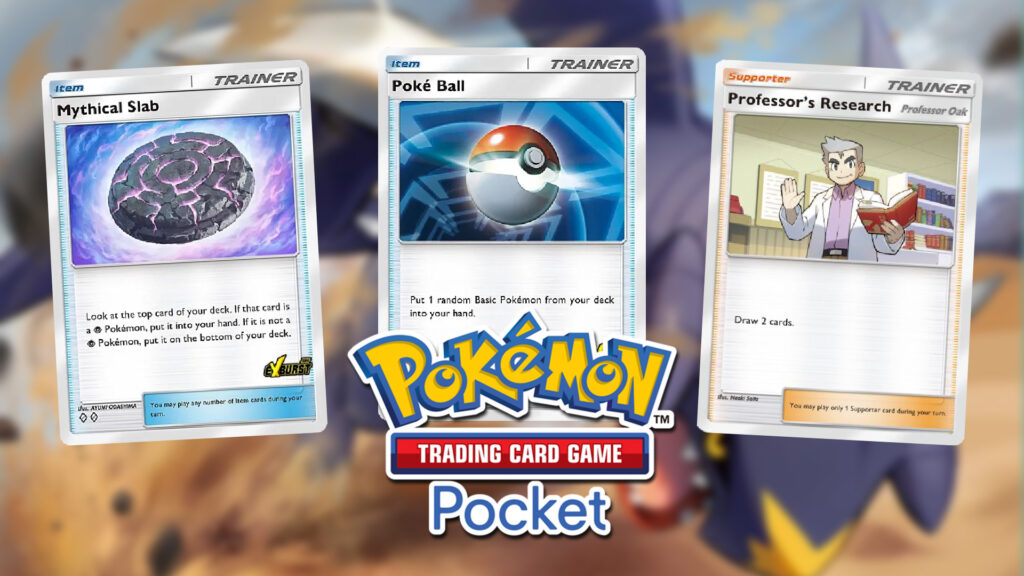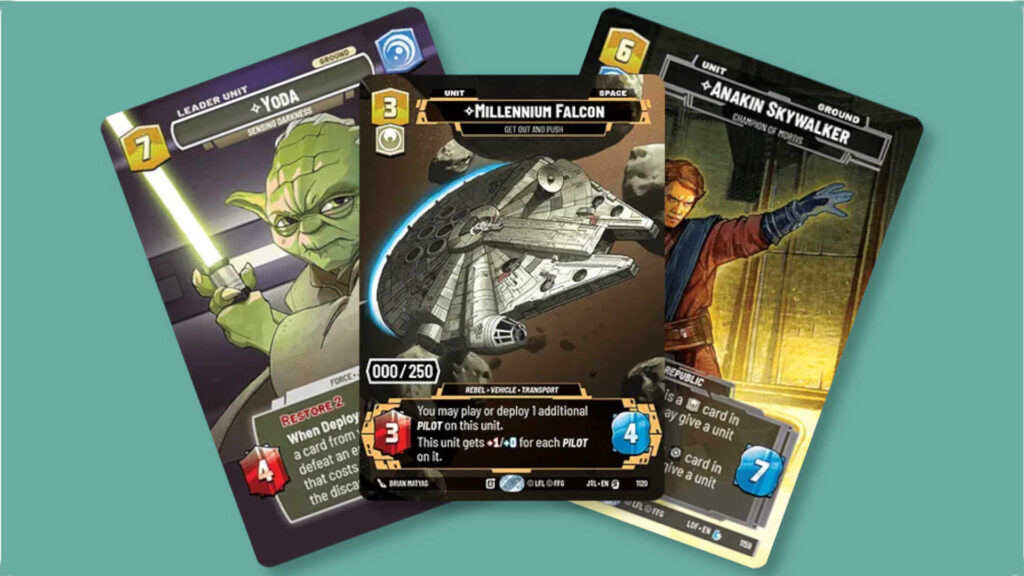Images courtesy of The Pokémon Company
In Pokémon TCG Pocket, approximately only 16 cards provide you with some kind of card advantage. This number is a very low one for any trading card game, but PTCGP keeps the number low for a good reason. After all, any given deck has exactly 20 cards in it. All cards can be played at a maximum of two copies apiece. However, this has led to players deeming certain cards as ubiquitous deckbuilding staples.
So, how does one go about playing with these super-strong card advantage providers? In what order should you play them to provide the maximum amount of efficiency in your draws? Let’s take a close look at the various kinds of card advantage and how these cards work.
Table of Contents
TogglePokémon TCG Pocket‘s Card Advantage Types
PTCGP‘s card advantage cards can be boiled down to a few different categories. One is strict card draw; this is your average, solid “draw X cards” sort of effect. It’s never flashy but it can often be impactful.
Next, we have what some players refer to as “tutors.” A holdover term from the original trading card game, Magic: The Gathering, tutors will search your deck and find a card. Currently, all tutors in the game are either laser-focused or completely random. There is no manual search required for a player to use a card in this category.
Following this, we have luck-reliant cards. These cards will either tutor up a card at random from a subset (but at an opportunity cost) or will rely on the top card being of a given subset to be drawn. If it isn’t, it goes to the bottom of the deck.
Finally, we have some cards that will return your own cards to your hand to be used again later on. This can allow you to evade your own Pokémon being Knocked Out, and is typically used for this purpose. However, with the luck-reliant card Pokémon Communication, for example, this type of card’s purpose has expanded somewhat. A word to those trying this, however: make sure you don’t have an empty Bench when using this kind of card.
Now that we’ve gotten the categories out of the way, let’s look at specific cards within them.
Pokémon TCG Pocket‘s Card Draw
With Pokémon being the obvious primary focus of the Pokémon TCG Pocket app’s gameplay, certain cards in this category are just Pokémon. These cards use their attacks and Abilities to accrue some degree of card draw, sometimes at the cost of discarding cards to achieve this.
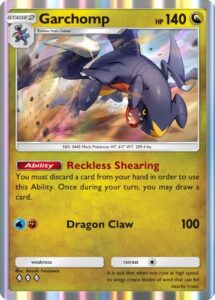
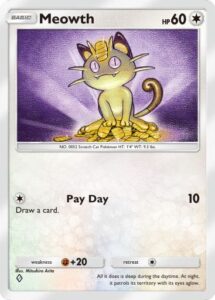
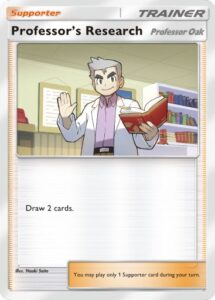
However, Pokémon aren’t the only sources of card draw in Pokémon TCG Pocket. Trainer cards, but more specifically one of them, are a major source of draw. The card Professor’s Research has become so ubiquitous in this game that nearly every single deck a player comes across runs at least one copy of it.
This article is not here to debate what good ubiquity does for a game like PTCGP, but rather it seeks to inform players of the best ways to use them. Cards like Professor’s Research and Poké Ball are the two most egregious offenders, but there’s an optimized cadence in how you should use them.
And speaking of Poké Ball, let’s move on to the next category: tutors.
Tutors: Deck Searching at Its Most Random
As mentioned above, tutors are either so laser-focused in Pokémon TCG Pocket that they’re extremely niche, or they’re completely random within a wider subset of cards in your deck. Granted, with only 20 slots in your deck for any kind of cards, this can be optimized as well.
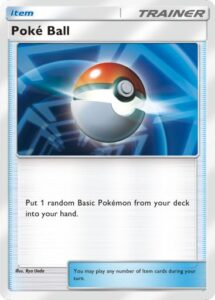
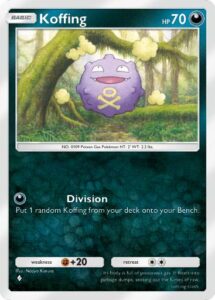
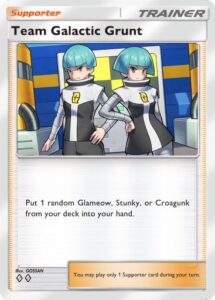
Cards such as Poké Ball and Caterpie can be used in very specific ways to make your gameplay more efficient. However, this aspect of play sometimes doesn’t even necessarily involve using the card you’ve tutored for! We’ll get back to this in a bit.
Other cards, like Koffing from Mythical Island, are examples of more niche tutors. Koffing’s Division attack only works maybe one time per game, while Team Galactic Grunt can be slightly more efficient, but, in terms of consistency, not by a ton.
Luck-Reliant Card Advantage
So far, only two Trainer cards exist that provide a luck-based source of card advantage in Pokémon TCG Pocket. Pokémon Communication and Mythical Slab are two high-risk, high-reward cards that can often get you out of a sticky situation, but will also often keep you there.
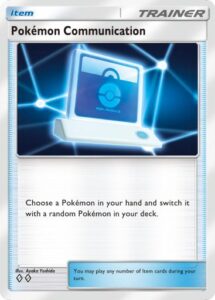
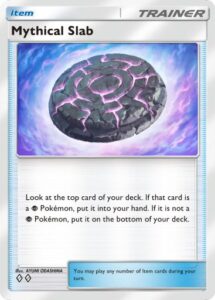
Pokémon Communication, the newer of the two, is great for when you have multiple Pokémon cards in your hand but not the one you need most. If at least one is superfluous to your plans, return it to your deck to potentially replace it with something better! What’s more, this applies to Stage 1 and Stage 2 Pokémon cards as well. Be forewarned though; you will never get the specific copy of the card you returned to your deck, but you could get a second copy if one was there. So be careful!
Mythical Slab is a far more simplistic design. To use it, you simply look at the top of your deck and if the card is a Psychic-type Pokémon, be it Basic or Evolved, you get to put it into your hand. This card works better in decks that run more Pokémon cards than Trainer cards, but those are often few and far between.
Return From Whence Ye Came
The final subset of card advantage providers in this game is only two cards strong: it’s just Koga and Budding Expeditioner. Both are Supporter cards and both are extremely niche, only returning three different Pokémon species between them. Even then, Budding Expeditioner only returns the Pokémon ex version of the Pokémon it returns. Both effectively serve the same role in different decks, but both cards’ usage rates have, understandably, dropped significantly with the release of newer sets.
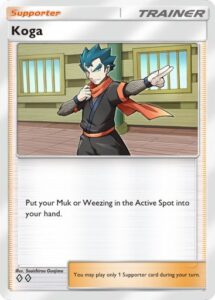
These cards don’t exactly matter for card advantage except in one specific corner case, which we’ll get to in the next section.
How Do You Optimize Card Advantage?
Here’s the meat and potatoes of what you’ve likely come to this article to read about.
Normally, when I evaluate card advantage in a match, I’ll figure out what it is that I need in my hand before determining the best ways to mitigate a bad draw. Often I’ll have Professor’s Research and Poké Ball in my hand at the start of a game. For this reason, I often want to play Poké Ball with reckless abandon to fill up my Bench. This isn’t always the best play, however. If you need a specific Basic Pokémon, you should generally use Professor’s Research first. That way you either get the Pokémon you needed plus one other good card, or you draw two cards that aren’t that one and lower your chances of tutoring the wrong Basic Pokémon.
When you’ve exhausted all the Basic Pokémon from your deck, sometimes Poké Ball is an extremely dead card. However, in a Garchomp deck, you can discard that now-useless Poké Ball to draw something that will oftentimes be more useful.
With cards like Mythical Slab, the question comes down to a few factors. How many cards in your deck fit the Psychic-type Pokémon subset? How many cards have you drawn from that subset? And how many cards remain in your deck? If you’re good at or even just savvy about counting cards, you’ll understand where I’m coming from with this. Pokémon Communication is cut from a similar cloth, wherein you need to know the rates of potentially replacing the card you put into your deck with the card you need.
Finally, a trick! Before you use Pokémon Communication in a deck where you run Muk, Weezing, or Mew ex, consider this method. You can use the requisite Supporter card to return a Pokémon card (or cards) to your hand before replacing one with a different Pokémon. That way, if you need something else, you have that option already firmly available!
Draw Till You Drop
Overall, these are just a couple of the examples that players have discovered over the past few months. Hopefully we’ve inspired you to improve your gameplay with better habits of accruing card advantage!
And now, we pass the digital microphone to you, dear readers. What methods have you found in Pokémon TCG Pocket that help you draw for that one perfect answer? What’s your favorite way to optimize digging through your 20-card deck? Have we missed any key points in this article? Sound off below!
If you liked this guide on card advantage, check out this analysis of turn order and the pros and cons of going first in PTCGP! Alternatively, you can look at our deck techs, including our latest, which focuses on Arceus ex and Dialga ex!


